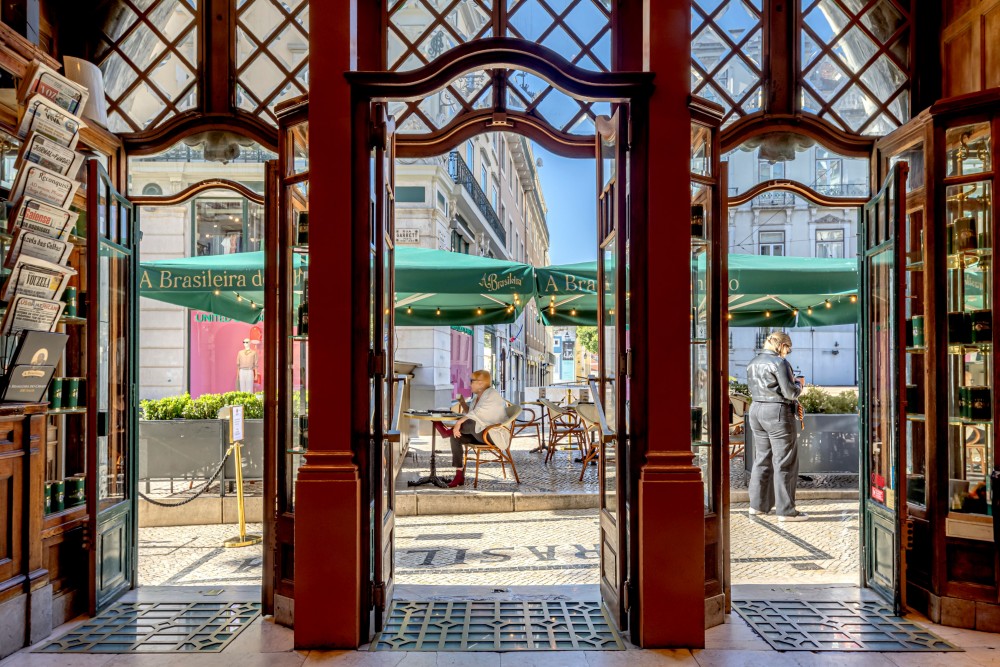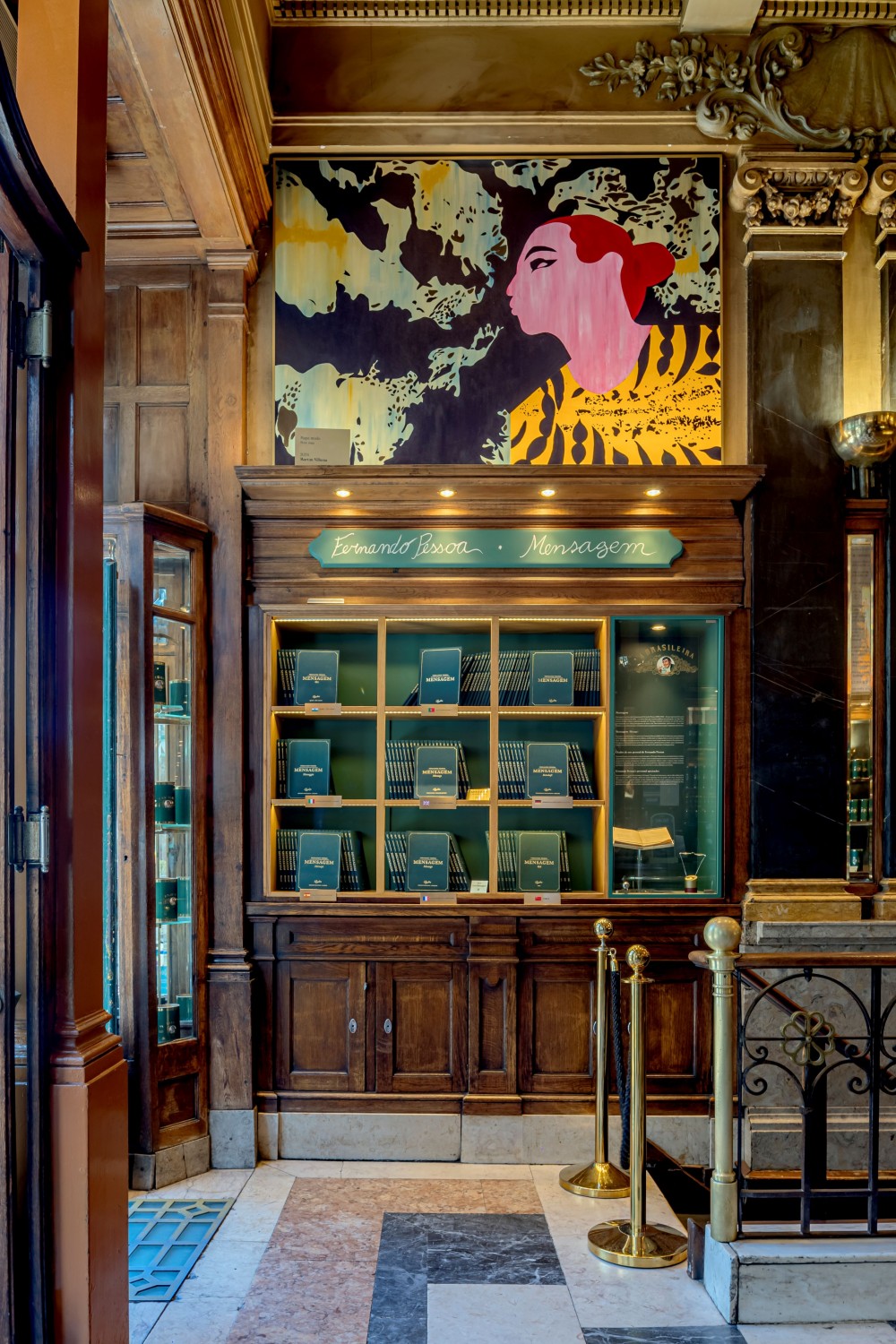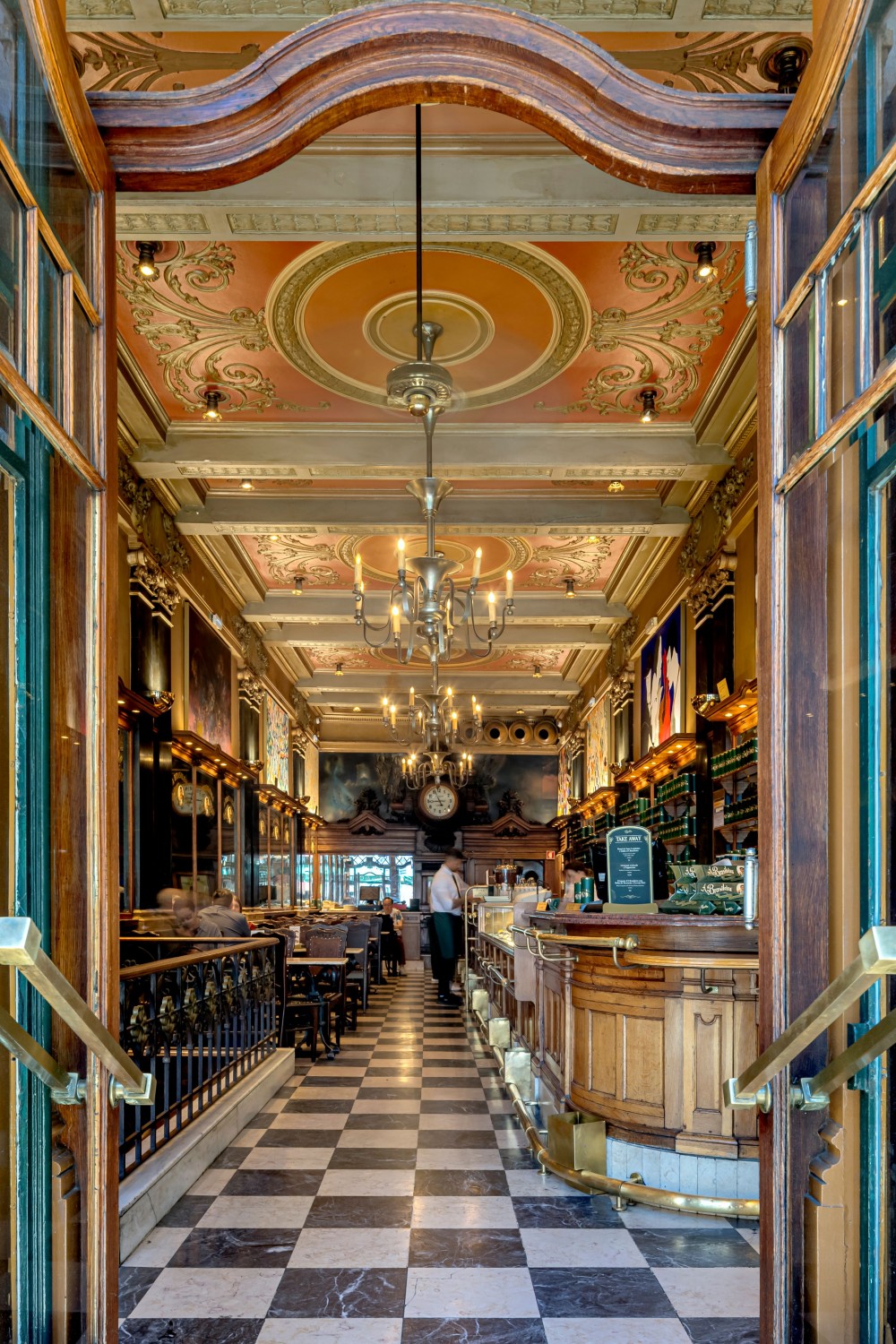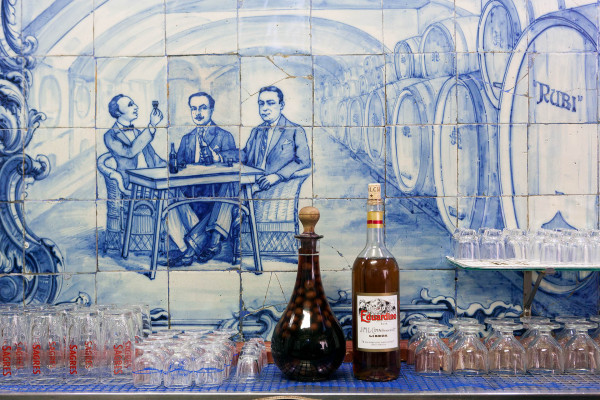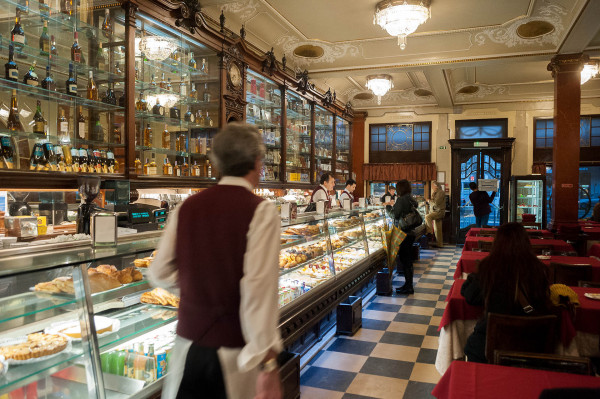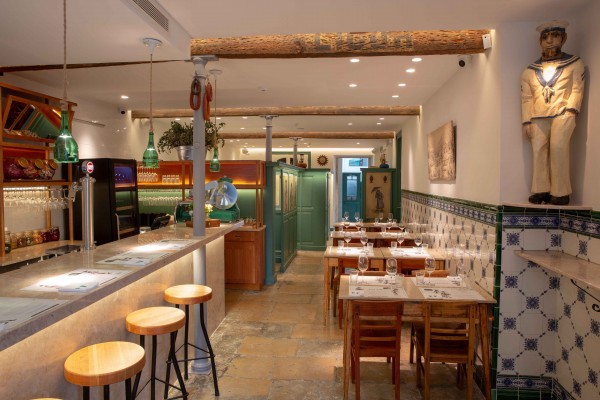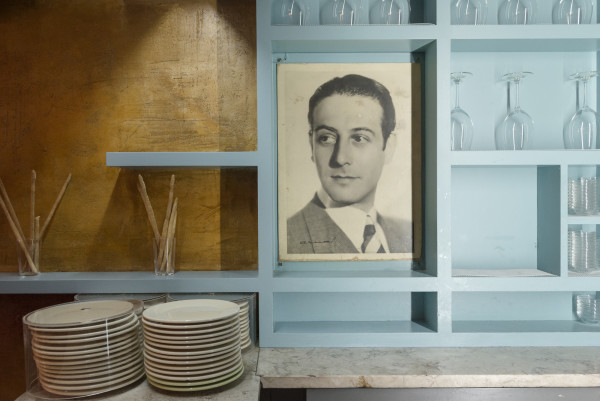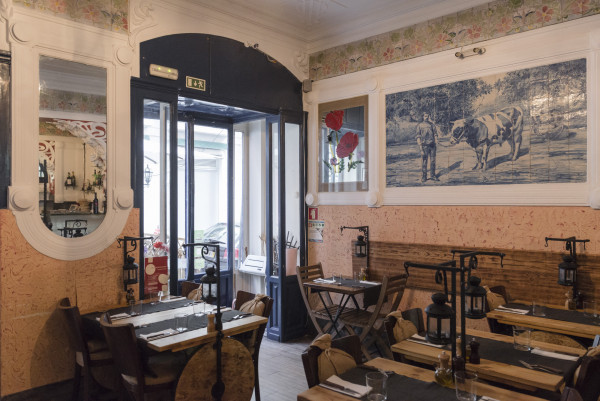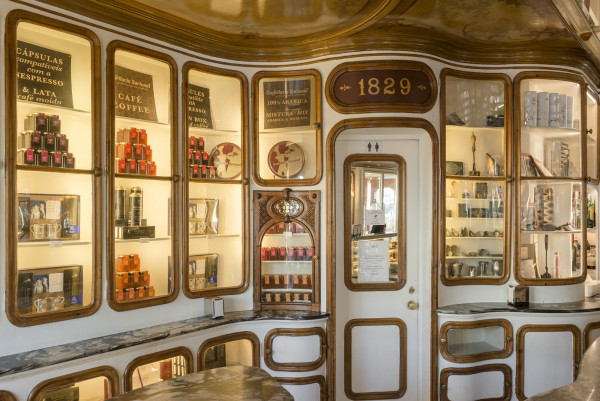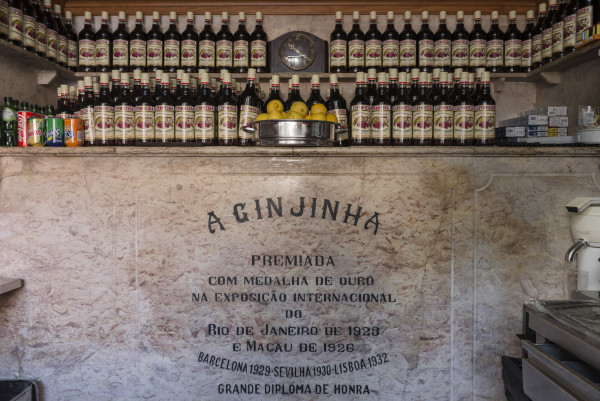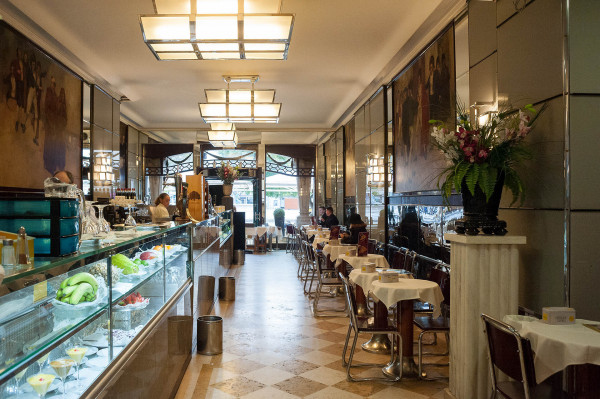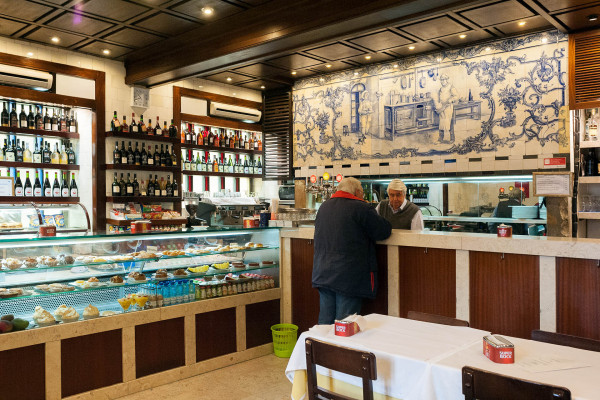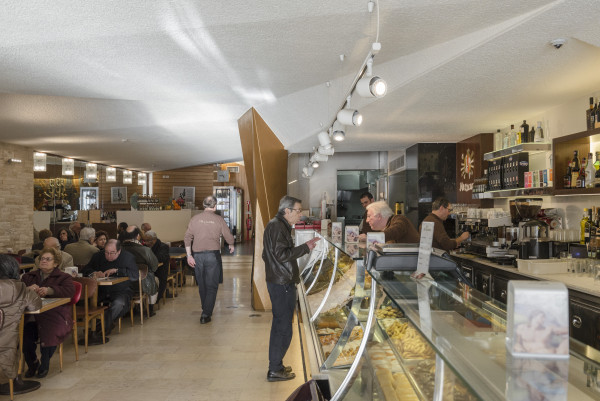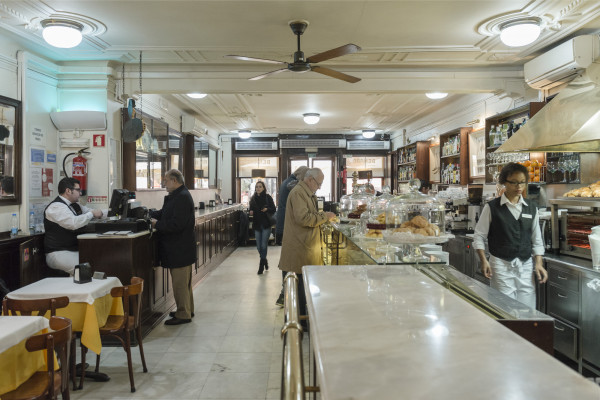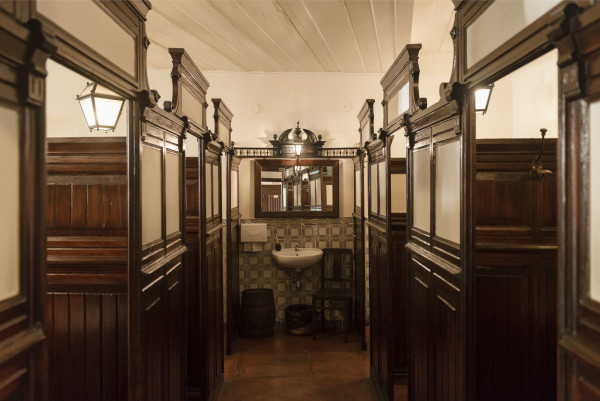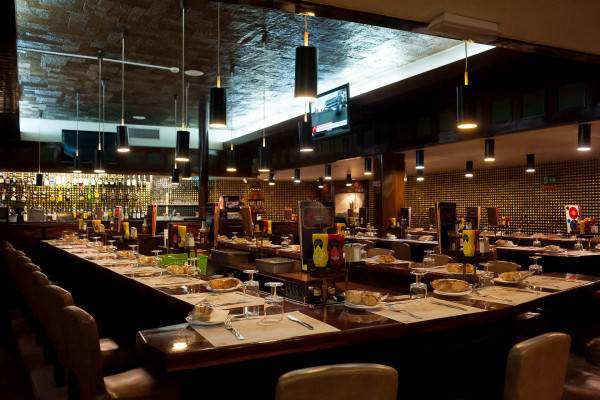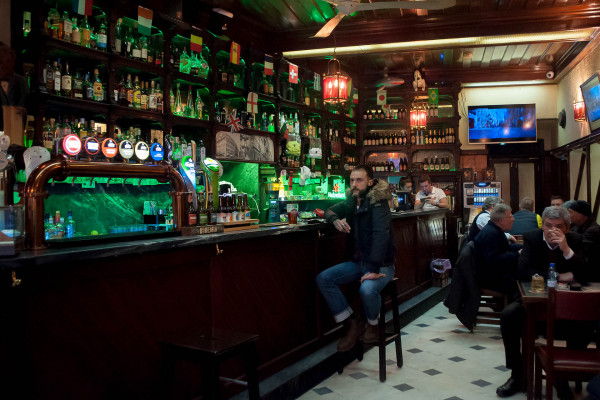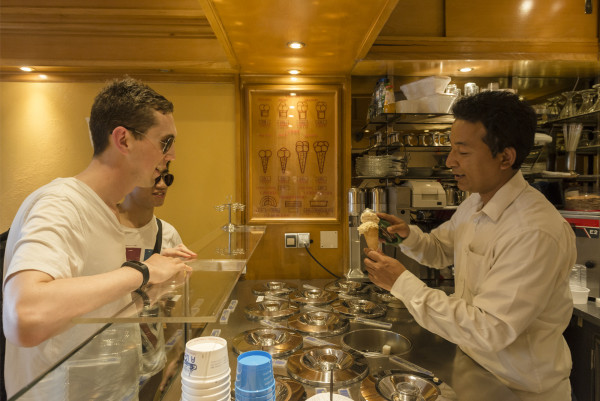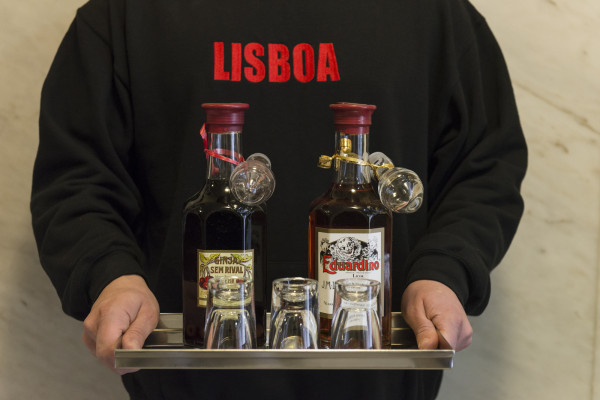The Shop
The history of A Brasileira involves many other Brazileiras (with a z) which opened up around the country, and even in Spain too, with the aim of introducing and teaching the art of drinking coffee at a time when the beverage was still very much looked down on in Portugal. The whole undertaking can largely be attributed to Adriano Telles, who left Alvarenga in Northern Portugal for Brazil at the age of 12. There he made his fortune in the coffee business. When he returned to Portugal, with his wife and children, he undertook a number of efforts to popularise coffee amongst the Portuguese. He would invite his friends and serve them filter coffee, and he even founded a free newspaper, entitled A Brazileira, which bore the subtitle Orgão de Propaganda da Casa Especial de Café do Brazil [Advertising Organ for the House of Brazilian Coffee].
The first Brazileira opened in Porto, in Rua Sá da Bandeira, in partnership with two other owners. Two years later, in 1905, was the turn of Lisbon, with the shop opening in a former shirt maker’s store. In the two years between the openings in Porto and Lisbon, there was also an incursion into Spain. Strangely enough, the Spanish did not take to the beverage that had a “bad taste, bad smell”[1].
A Brazileira opened in Seville and another in Braga. In Lisbon there was even two shops: one in Chiado and the other directly on Rossio. But, a century later, it is that in Chiado which still survives, although at some stage it dropped the “z” for an “s”. Renovation work saw the addition of a staircase and kitchen and remodellings of the café interior; there was also the addition of a seated Fernando Pessoa in bronze outside the door, exposed to all the elements and bombardments by flashes of tourist cameras. Slowly but surely, it gained a position of favour as one of the most emblematic sites in the Chiado district.
Some of the remodelling work was led by the architect Norte Júnior, who was responsible for a number of Lisbon’s Historic Shops and the overall project for the Avenidas Novas district, including A Brasileira do Chiado and the façade for the jewellery stores Joalharia do Carmo and Ferreira Marques, to name just two. The remodelling of 1908 turned the ground floor into a coffee house and saw the emergence of something unknown until then, but which is today considered very ordinary: the sale of coffee by the cup. This was such an unusual custom that Adriano Telles decided to give out cups of coffee for free. For a period of 13 years, drinking coffee at A Brasileira was free, and the “bica” hadn’t even come into existence yet.
The origins of the word “bica” for an espresso-type coffee are the object of intense debate, with various narratives competing against each other. Whilst we cannot confirm any one of them, it would appear beyond doubt that the name has do with the Portuguese term bica for spout, i.e. the part or “tap” through which the hot dark liquid comes out of the machine. Often the coffee went cold in the coffee-making machines, and once, a customer asked the server to take the coffee “directly from the tap”, where the coffee would be hot. That may be true; just as another version, not incompatible with the others, as it came after them, could also be. In his various efforts to get the Portuguese to fall in love with the beverage, a sign was hung in the shop that read Beba Isto Com Açucar [Drink This With Sugar]. Whatever the truth is, one thing is for sure: the name stuck and the bica became an everyday part of Lisbon life. In Porto, by the way, they call it a cimbalino… but that would be another story...
By the 1920s, A Brasileira in Chiado was a famed establishment and a meeting place for intellectuals and artists. The Lisbon chronicler Norberto de Araújo, launched an appeal in the Diário de Lisboa newspaper for the walls of the café to be decorated with paintings by the modernist painters who frequented it. It was a request he was to live to regret, as neither he, nor the customers in general, were happy with the resulting artistic rupture and innovation. Indeed, by 1925 it had resulted in one of the most fantastic collections of avant-garde art that was immediately frowned upon by the critics of the day – including two paintings by Almada Negreiros, alongside works by Eduardo Viana, Jorge Barradas, António Soares, Stuart Carvalhaes, José Pacheko and Bernardo Marques. Only with the passage of time and a change in mentality did the paintings take on the value they enjoy today, and they were only replaced in the 1970s by a new selection of works by a new generation of artists. That replacement came hand in hand with a number of new remodelling projects, which was followed by further work in the 1990s as part of Lisbon’s stint as European Capital of Culture.
In 1988 the bronze statue of Pessoa was placed outside the café. It is a sculpture by Lagoa Henriques, who probably had no idea that his work would become the most photographed bronze sculpture in the whole country and region. One reason for this is the large influx tourists into the neighbourhood, which is indeed reflected in the café’s own ambience, although this does not mean that it is difficult for locals get in. The café still hosts artistic salons, reminiscent of days gone by. Those that frequent the café recommend its pastel da nata [custard tart] based on a recipe by an award-winning chef, the chicken pasties and the lemon meringue pie. Not many people are aware of the restaurant on the lower floor, where the most famous dish is the Brasileira steak, followed by Portuguese stalwarts such as bacalhau [salt cod], açorda de marisco [a thick bread soup with seafood] and cataplana [a fish/seafood stew cooked in a copper pan with a lid].
The little newsagents shop at the entrance also reflects efforts to maintain traditions: the morning coffee and newspaper, leading to conversations on the latest news, conviviality, debates on the state of the world, struggles against incomprehension, the devising of great revolts and revolutions – even those which, as is more or less clear from the outset, will not be going any further than the café table.
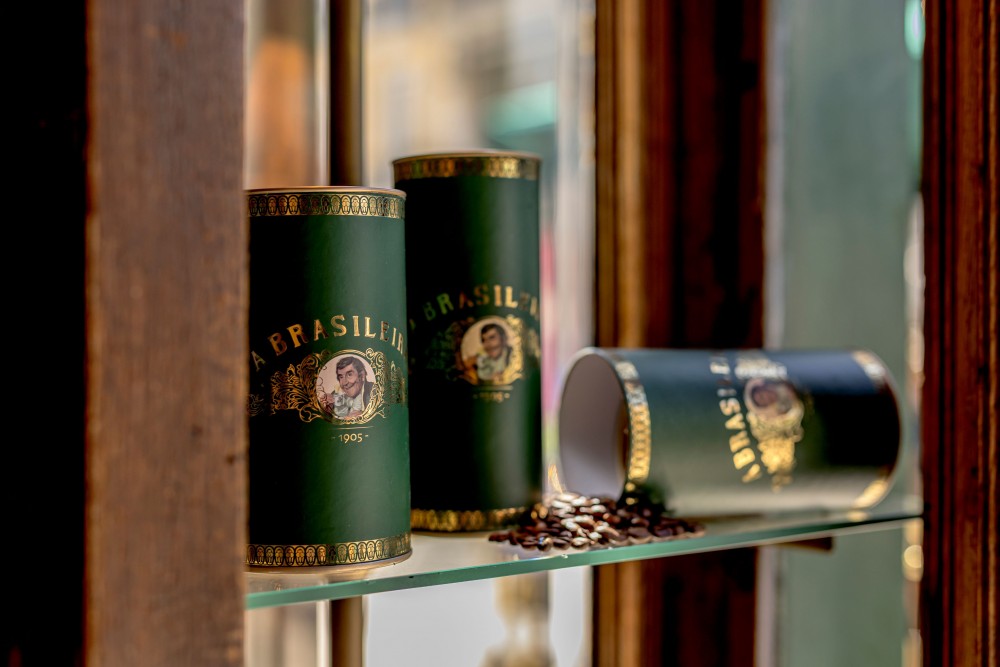

References & Links
[1] Apud ROCHA, Maria Estela Tomé da – A Brasileira do Chiado – 100 anos
Products
& Services
Café/Restaurant



